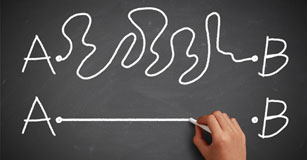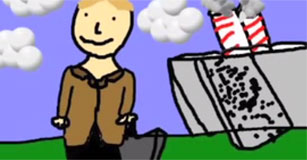Say the Change You Want to See
Find and measure hidden objectives

Many schools we have worked with at GenYES have a vision of students and teachers co-creating the learning environment. In such an environment, empowered students step up and take part in the effort to improve education, and tech-savvy teachers feel more confident about integrating technology.
Often, the stated objectives at these schools don’t adequately describe the full vision. There are unspoken wishes, hopes, and desires that go along with the hard statistics. Sometimes these sound “soft” and are hard to measure, yet they are often the most important goals of all. If schools can put these unspoken goals in writing, they can more effectively plan for and implement them, and more importantly, figure out how to measure them.
Finding hidden objectives
To help schools find these hidden objectives, we encourage them to “say the change you want to see.” In this simple visioning exercise, we ask them to first imagine that everything they hope for comes true and then to write a fictional story for their community newspaper about “what happened.”
We ask them to make sure that the story is simple and clear, without academic citations, obtuse language, grant gobbledygook, or pages of distracting data. Requiring them to use the present tense and conversational language creates impact, and the quotes and anecdotes they come up with make the vision come alive.
For example:
After a year of participating in the TEAMS project, student excitement about learning is at an all-time high at Fallsburg Middle School. Mary K., a seventh-grade student, says, “I love learning this way! I was getting bad grades, but now I love coming to school.” Parents feel the same way and see the learning as being more “real world.” Before TEAMS, only 26 percent of FMS parents said they felt what their children were learning in school was relevant. After only one year, this rose dramatically to 87 percent.
The beauty of this exercise is that it uncovers unspoken wishes. Often there are outcomes that are secretly yearned for but never really get articulated. The goal might be for teachers to use technology more, but the hope is that students will be more engaged. A grant states that student achievement will rise, but your hope is that students will love learning and feel empowered. You purchase technology and measure its use, but you hope that teachers will rediscover that spark that made them want to be teachers in the first place.
Measuring hidden objectives
The story should help you unearth hidden agendas and make them tangible. The next step is to figure out what in the story needs to be planned for and measured. If a goal is to have happier students or more satisfied teachers, how will you know if you’ve accomplished it? Somebody had better ask them! How will you show it? Somebody needs to shoot some video and collect some quotes. Plan for that now. Is one of your goals community involvement? Ask them, too! Plan some surveys to administer both before and after the big project. If you want to say there is an improvement, you have to measure before, after, and maybe even in between.
If goals are not currently being measured, they won’t happen. A year from now, you’ll wonder why. So determine how you can measure them. Do now what you think is necessary to make that story a reality in a year. Do now so you can document the real hidden hopes and dreams that make all the hard work and long hours worthwhile.
Say the change you want to see. Ask the change you want to see. Be the change you want to see.










